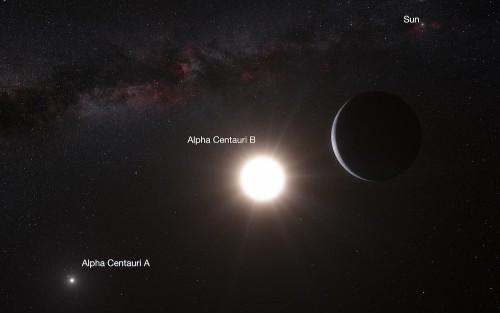
The closest star system to our own Sun may have two Earth-sized exoplanets orbiting it, a new study has shown based on observations by the Hubble Space Telescope. If confirmed, the discovery would help to illustrate just how common exoplanets are; data from Kepler and other telescopes has also already shown that the vast majority of stars have exoplanets orbiting them, and the number of exoplanets in our galaxy alone is now thought to number in the billions.
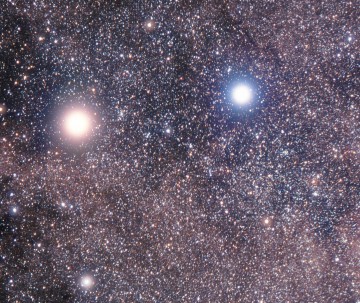
Both candidate exoplanets, if real, orbit Alpha Centauri B, one of two stars in the Alpha Centauri binary star system, the closest star system to Earth at only 4.3 light-years away. That would be an exciting find, since most exoplanets have so far been found orbiting stars much farther away, due to the nature of observations required for different kinds of searches. A third star, Alpha Centauri C (or Proxima Centauri), may or may not be gravitationally associated with the first two stars.
One of the two exoplanets, Alpha Centauri Bb, was first tentatively discovered in 2012, but its existence was questioned by other scientists in 2013. It was likely a rocky planet estimated to be only slightly more massive than Earth.
“If you ask anyone working in exoplanets, they would all have a different opinion about the existence of Alpha Centauri Bb,” said Brice-Oliver Demory of the University of Cambridge.
Demory and his colleagues have been using the Hubble Space Telescope to continue looking for the exoplanet, but so far haven’t been able to confirm it. The earlier search and Demory’s search have used two different exoplanet-hunting techniques: the radial velocity method and the transit method. With the original radial velocity method, the team looked for slight wobbles in the star caused by the gravitational pull of any planets. The later Hubble search looked for indications of any planets transiting in front of Alpha Centauri A or B as seen from Earth.
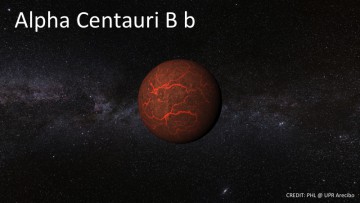
The first search indicated that Alpha Centauri Bb likely orbited its star in only three or four days, which is a much smaller orbit than even Mercury’s in our Solar System. But Demory’s team wanted to see if the Alpha Centauri Bb would also transit in front of its star. Observations in 2013 and 2014 seemed to confirm that at first, but then subsequent analysis of the data showed that it lasted slightly longer than expected, and the statistical validity of the signal disappeared when combined with the 2014 data.
This doesn’t prove that Alpha Centauri Bb isn’t there, only that if it is, it doesn’t transit in front of its star in a way that the transit could be seen from Earth. The team was also able to rule out that the possible planet was actually errors with Hubble itself, spots on the surface of the star, or interference from the other star, Alpha Centauri A.
This uncertainty, however, led to an interesting possibility of another planet in the same system, roughly the same size as Alpha Centauri Bb. This planet would be a bit farther out, orbiting in 20.4 days—not quite as close as Alpha Centauri Bb, but still way too close to the star to be considered habitable. An extreme version of Mercury, if you will.
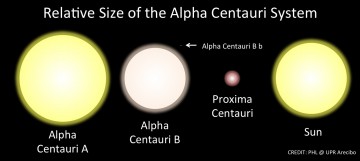
Other exoplanetary systems found so far have shown that, like ours, it is common to have more than one planet in a system. “If you see one planet, the chance is there are other planets in the system,” said Demory.
According to Paul Wilson of the Paris Institute of Astrophysics in France: “The work they’ve done holds tight; they give a very well-balanced view on what this transit could be. I hope they will be able to detect an Earth-sized planet through the transit method. That would be fantastic.”
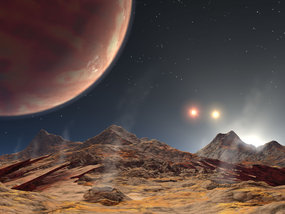
Better observations of the possible exoplanet(s) may have to wait a while. Upcoming space telescope missions such as Cheops (CHaracterising ExOPlanet Satellite) might be able to do that, or the ground-based European Extremely Large Telescope. Another proposed idea is to have a small satellite dedicated to observing the Alpha Centauri system exclusively. The cost would only be about $2 million.
“It could be crowdfunded,” said Demory. This sounds like an excellent idea; it would be a unique opportunity to learn more about another Solar System that is very near our own. It is even conceivable that at some point a probe could be sent there to actually visit these worlds; most stars and their planets are too far away for such a mission to be conceivable any time soon.
Even if the potential Earth-sized exoplanets orbiting Alpha Centauri B did turn out to be false positives, there are still many others now being discovered by Kepler and other space- and ground-based telescopes. It is now estimated by scientists that smaller worlds like this are the most common in our galaxy, along with “super-Earths,” rocky planets which are larger than Earth but smaller than Neptune. A number of these are potentially habitable and that number is sure to grow over the next few years. The closest exoplanets may or may not be at Alpha Centauri, but even if the answer is no, there are still plenty of others to get excited about.
The published paper is available here.
Want to keep up-to-date with all things space? Be sure to “Like” AmericaSpace on Facebook and follow us on Twitter: @AmericaSpace




This is exciting! Have we sent any messages to this system as it would only take 4 years and we could get a response in 4 more ..If anyone is home…
In 2008, 20th Century Fox transmitted their remake of “The Day The Earth Stood Still” toward the Alpha Centauri system. As close as it is, our radio and television broadcasts going back to the 40s should be detectable from there. The bigger issue would be the need for someone to be there to detect it in an incredibly inhospitable environment. Then if that someone were there, they’d need to expect data to be encoded in radio waves, and if they ever found the signals, figure out how to decode them.
Thank you for the good writeup. It in fact was a amusement account it.
Look advanced to far added agreeable from you! However, how can we communicate?